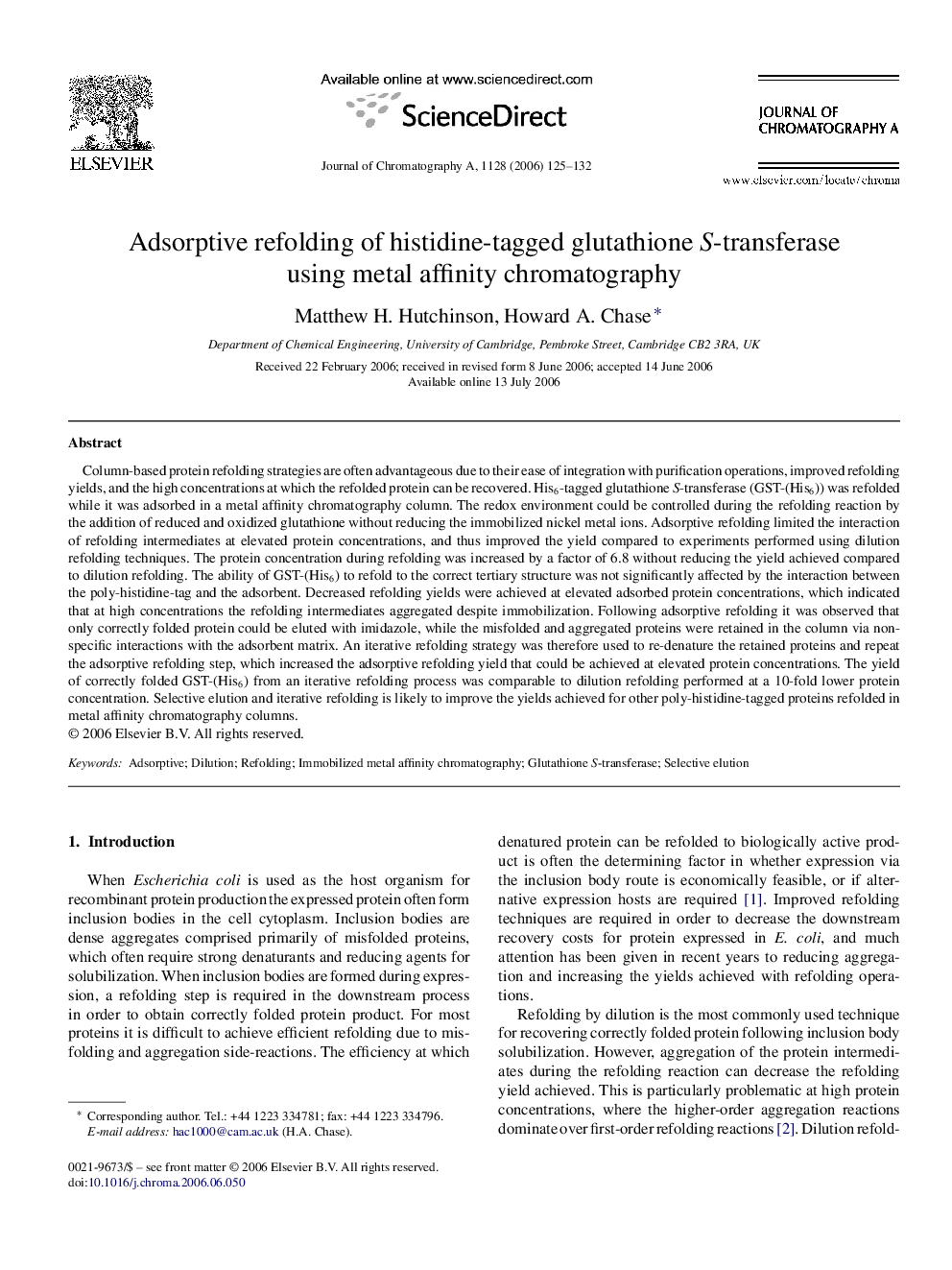| Article ID | Journal | Published Year | Pages | File Type |
|---|---|---|---|---|
| 1211443 | Journal of Chromatography A | 2006 | 8 Pages |
Column-based protein refolding strategies are often advantageous due to their ease of integration with purification operations, improved refolding yields, and the high concentrations at which the refolded protein can be recovered. His6-tagged glutathione S-transferase (GST-(His6)) was refolded while it was adsorbed in a metal affinity chromatography column. The redox environment could be controlled during the refolding reaction by the addition of reduced and oxidized glutathione without reducing the immobilized nickel metal ions. Adsorptive refolding limited the interaction of refolding intermediates at elevated protein concentrations, and thus improved the yield compared to experiments performed using dilution refolding techniques. The protein concentration during refolding was increased by a factor of 6.8 without reducing the yield achieved compared to dilution refolding. The ability of GST-(His6) to refold to the correct tertiary structure was not significantly affected by the interaction between the poly-histidine-tag and the adsorbent. Decreased refolding yields were achieved at elevated adsorbed protein concentrations, which indicated that at high concentrations the refolding intermediates aggregated despite immobilization. Following adsorptive refolding it was observed that only correctly folded protein could be eluted with imidazole, while the misfolded and aggregated proteins were retained in the column via non-specific interactions with the adsorbent matrix. An iterative refolding strategy was therefore used to re-denature the retained proteins and repeat the adsorptive refolding step, which increased the adsorptive refolding yield that could be achieved at elevated protein concentrations. The yield of correctly folded GST-(His6) from an iterative refolding process was comparable to dilution refolding performed at a 10-fold lower protein concentration. Selective elution and iterative refolding is likely to improve the yields achieved for other poly-histidine-tagged proteins refolded in metal affinity chromatography columns.
